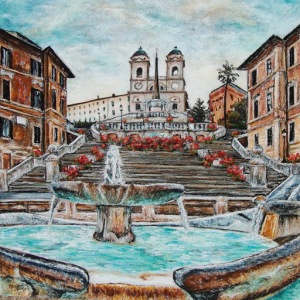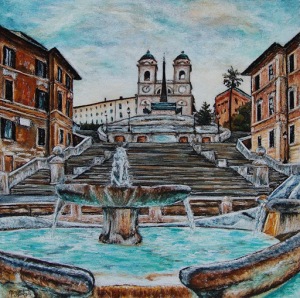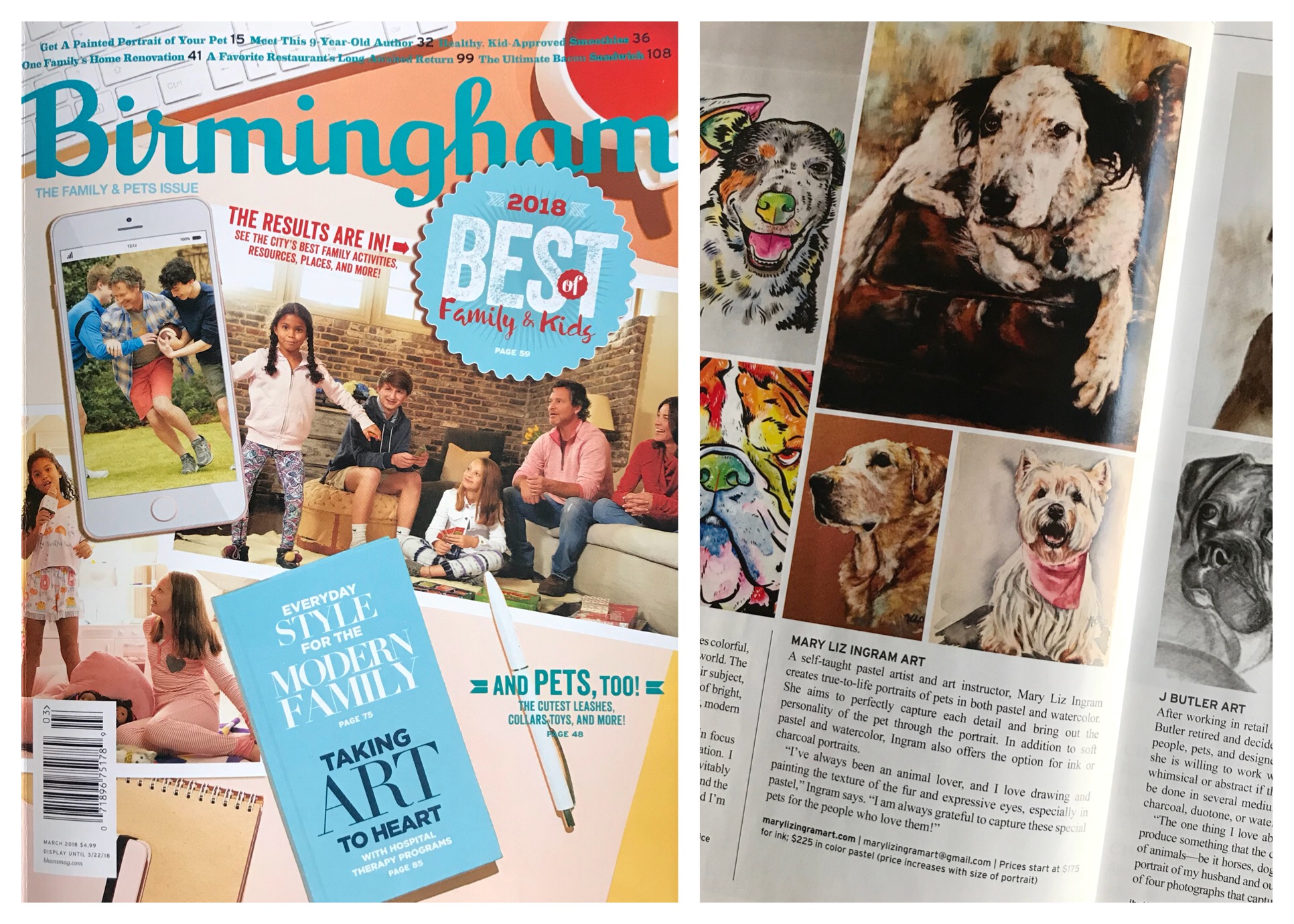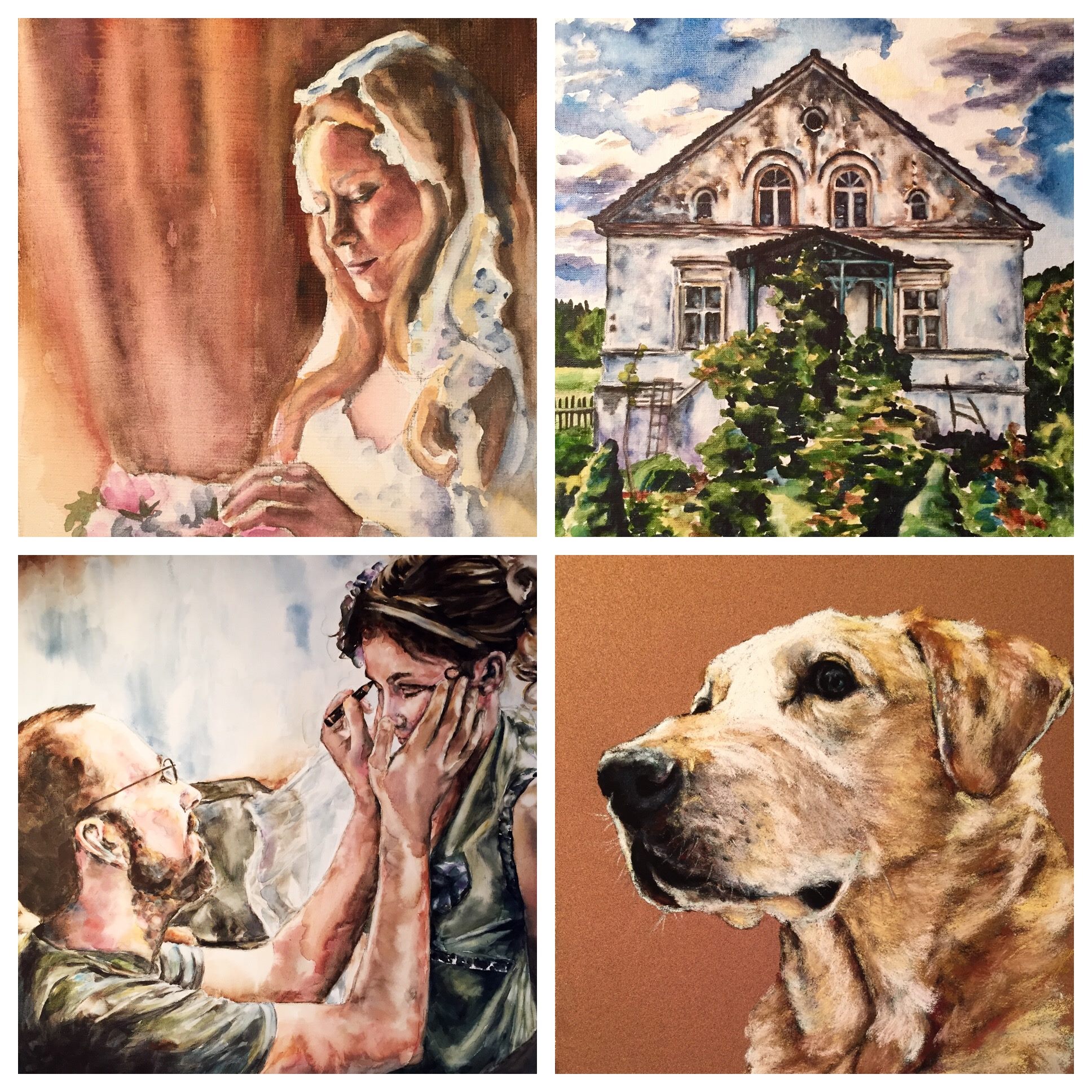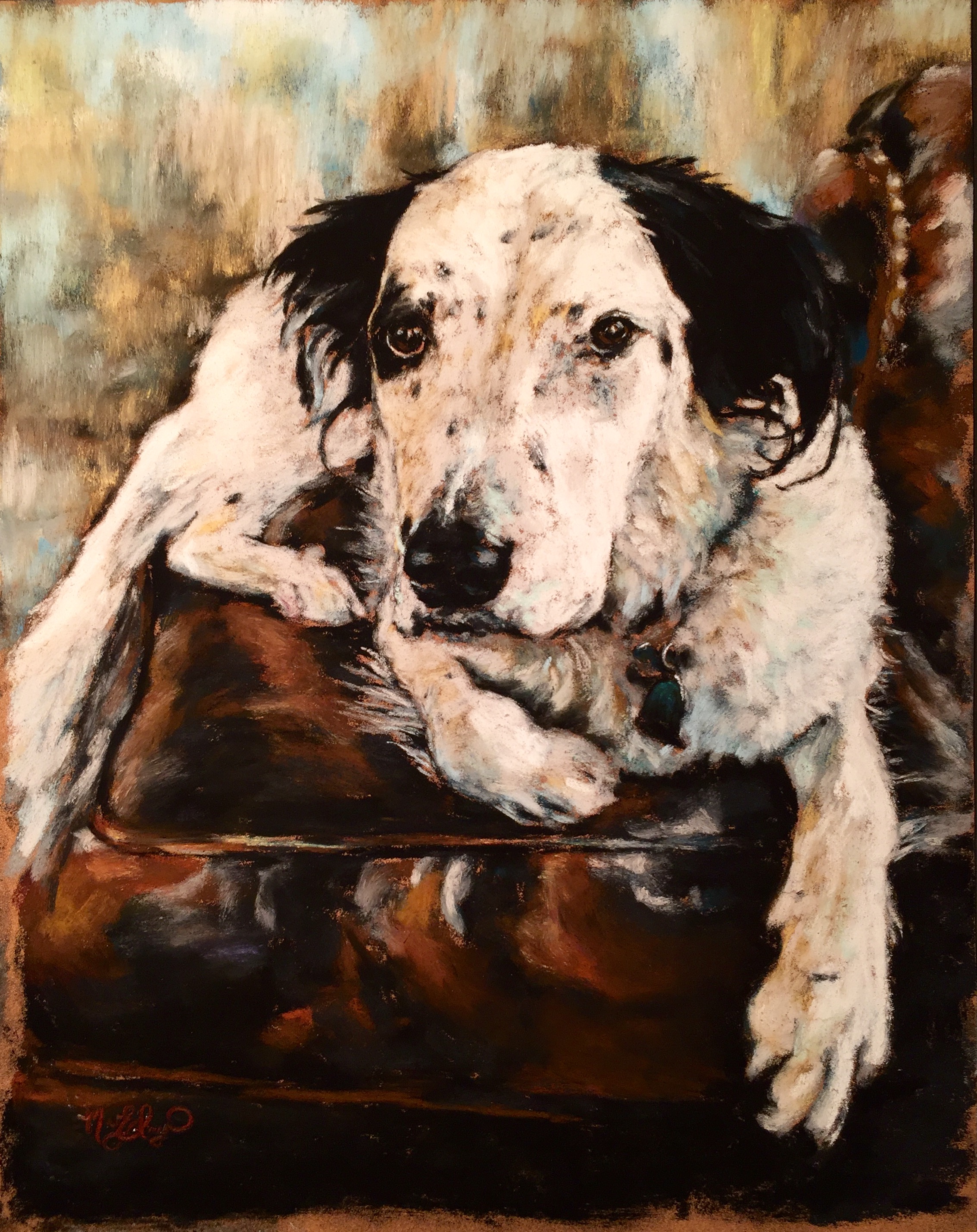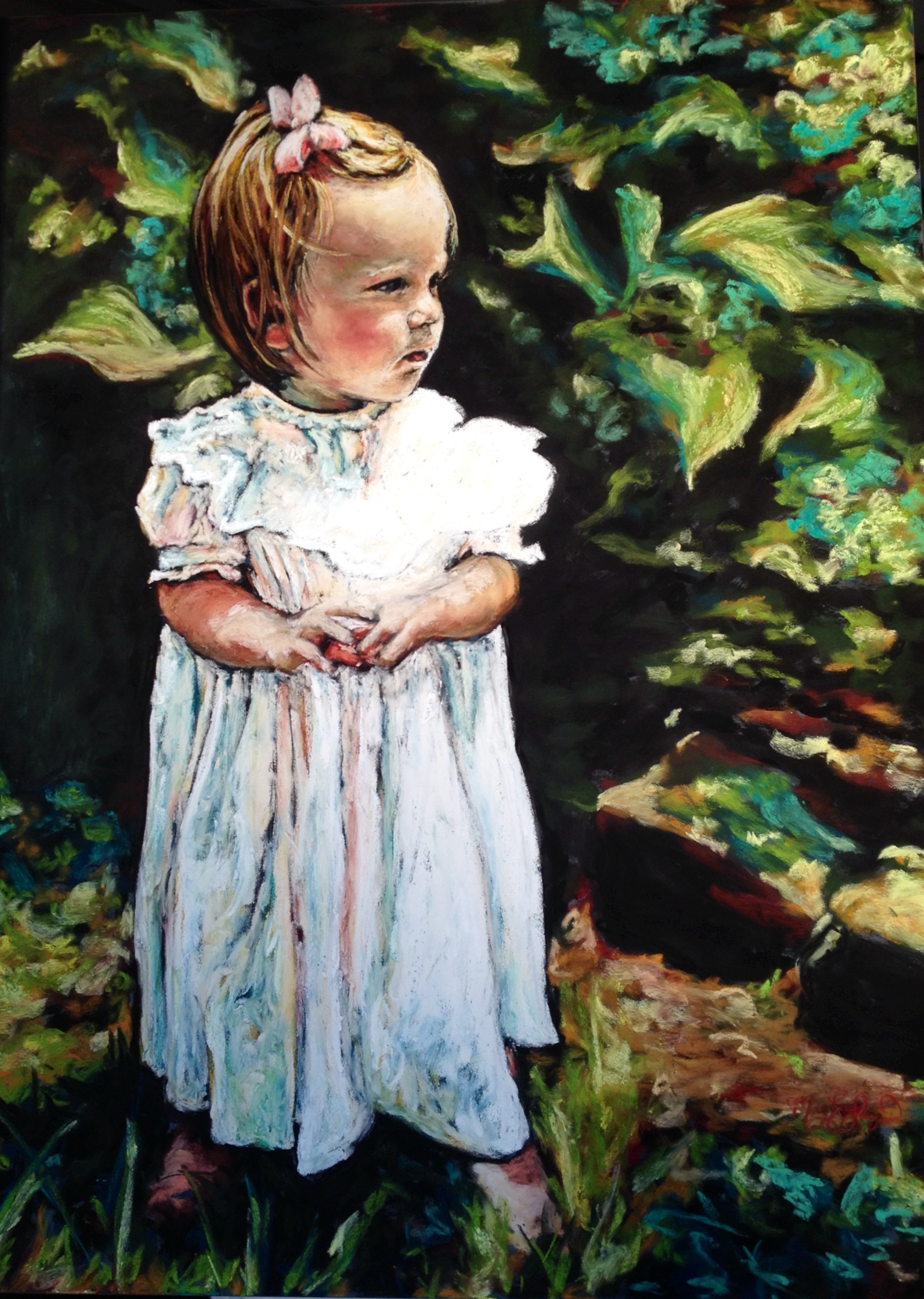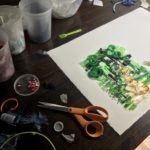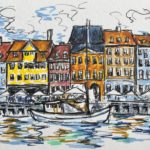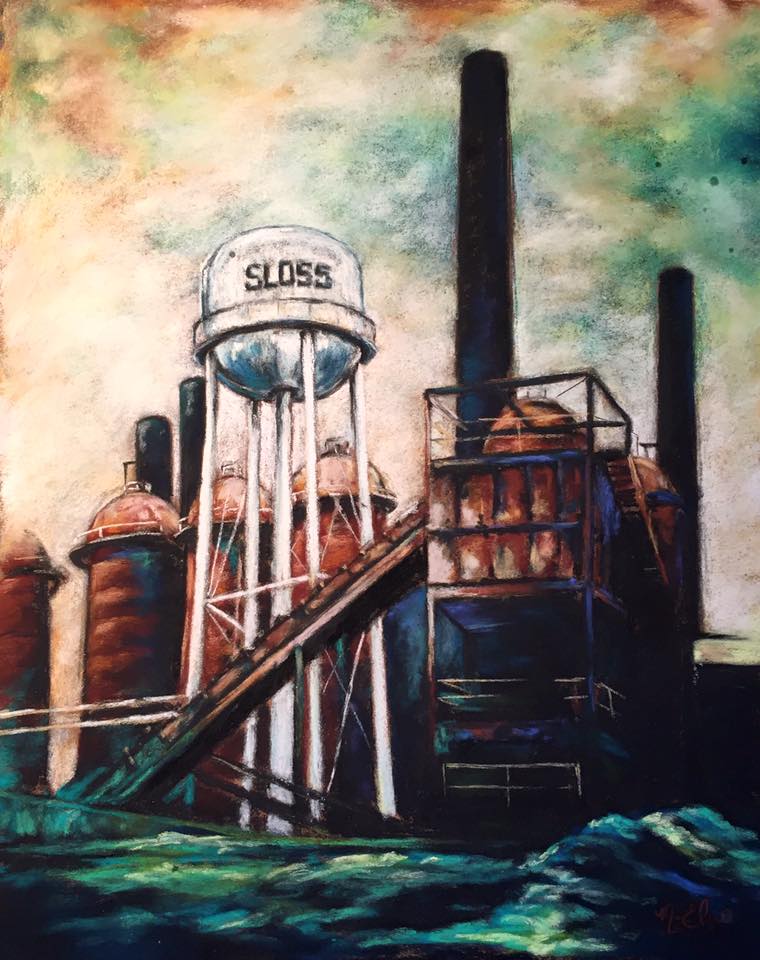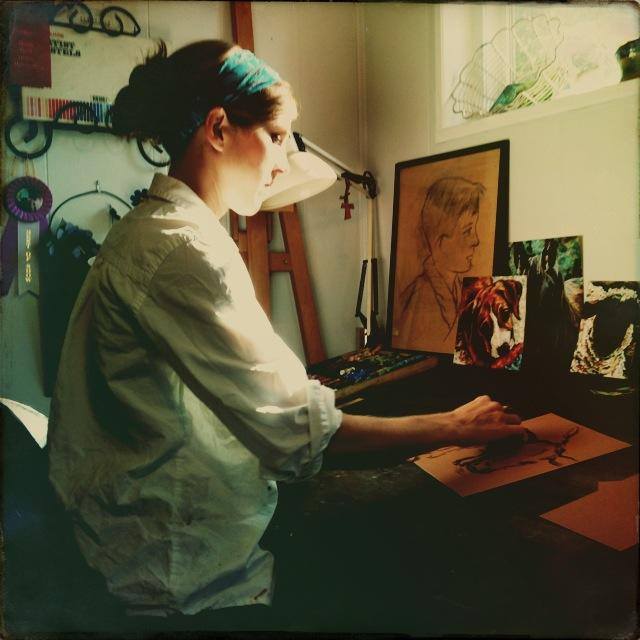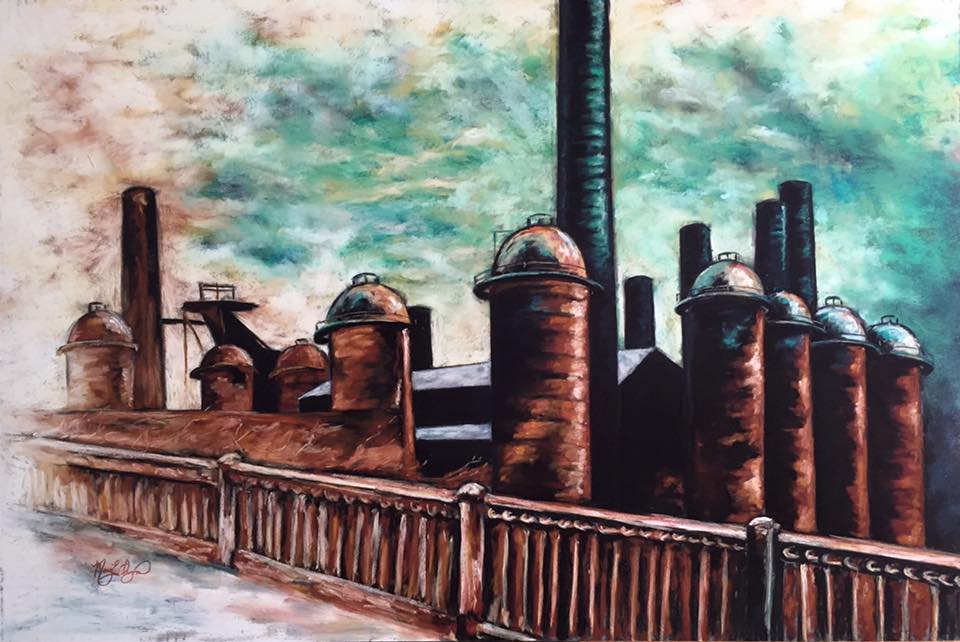Many times, especially at art shows, I am asked about the fragility of pastels. True, if you wipe your hand across an unframed picture, you will smear it. True, if it rains on a picture, it will mess it up. BUT…you can fix it! There have been several big “accidents” in my 3 years of pastel-painting:
1) when spraying a fixative on a 4×4 portrait with a can of spray that was clearly running out, I gave it a test and decided to go for it and ignore the omen of splatters. I gave it a quick spray…um, make that a big splatter. After chunking the can across the yard and kicking a newspaper (to my neighbors’ amusement, I am sure), I took my darkened and spotty picture inside and touched it right up with some light layers of flesh tones and any needed details. Frustrating, yes; big deal to correct, not so much.
2) After delivering a finished pastel to a client, the piece fell victim to a big drip of rain water off of her porch. She brought it by and it was quite a drip– a big, dark circle right in the center of the subject. I took it in the art room while she waited, and in a matter of minutes it was repaired. I just covered the dried spot right up with the same color blue.
3) One of my “precious” (note sarcasm here) cats decided it would be a fabulous idea to jump on my art table, walk on a very large pastel painting, put black footprints in the sky, scratch down the middle as the picture slid, and slide right down off the side. Awesome. I found the culprit by inspecting dirty, furry feet. In this case, I blew off the excess dust outside, then went to work layering the appropriate color pastel to cover up the paw-prints and smears. Good as new (but maybe not my mood)!
I’ve gotten a bit more careful, especially when spraying. I steer clear of rainy days and keep my pastels inside or covered; I make sure to seal them up to keep fingers (and cats) off of them.
Recently, I have used this comfortable knowledge of pastel’s ability to cover mistakes to make some alterations to a commissioned piece. Before I began the Spanish Steps (30×30 pastel), the decision over whether or not to include flowers on the steps was not firm. I told my clients that I could add them later if they wanted, after they saw the finished piece. We did decide to add some red flowers, and while doing so I made a few other corrections. Below is the piece with alterations, and the piece before the additions. Pastel covers well, and is not as fragile as you may think! How many differences can you spot?







